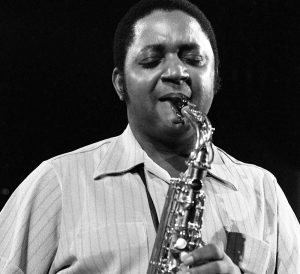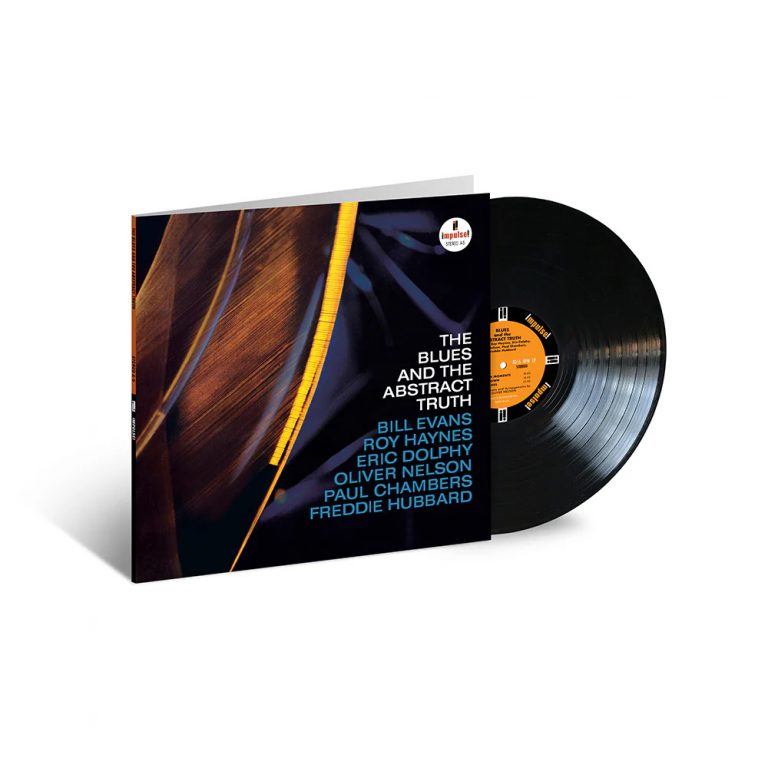What is jazz? For an answer, one could do a lot worse than setting the needle down anywhere during “Stolen Moments”, the famous minor blues (with a brief visit to a major-seventh chord) that opens Oliver Nelson’s majestic “The Blues And The Abstract Truth”.
1961: John Coltrane was in Newsweek magazine and releasing the huge-selling “My Favorite Things”. Jazz was leading the musical conversation and would arguably never be as popular again. Meanwhile, newly-installed Impulse! A&R manager and producer Creed Taylor was signing saxophonist, composer and arranger Nelson to a one-off album deal. Influenced by Coltrane, Sonny Rollins, George Russell and Gil Evans, Nelson had put together seven new blues-oriented compositions, including “Teenie’s Blues”, named for his sister, and “Cascades”, which came straight from a practice exercise. “Hoe-Down”, meanwhile, shared a title and maybe some of its galloping propulsion from a section of Aaron Copland’s “Rodeo” suite.

Nelson gathered three of his favourite musicians, all of whom had appeared on recent Prestige solo albums: drummer Roy Haynes, multi-reed man Eric Dolphy and bassist Paul Chambers. He also added new jazz superstars Bill Evans on piano and Freddie Hubbard on trumpet.
Not surprisingly, given the impressive list of personnel, there was some excitement at Rudy Van Gelder’s Englewood Cliffs studio on 23 February 1961, as the band quickly ran through the tunes. Producer Creed Taylor reports that Nelson wouldn’t just count the band in verbally: “He would leave the floor! Jump in the air and come right down on the downbeat.” He was also extremely impressed by Nelson’s meticulous arrangements, only occasionally suggesting a different order or length of solo.
Dolphy, fresh from beginning his long, fruitful collaboration with Coltrane, reportedly forgot to take his bass clarinet to the session, so appears only on alto sax and flute. On “Yearnin’”, “Hoe-Down” and “Teenie’s Blues”, his playing explodes out of the speakers, frequently invoking the sound of surprise (and listen out for Haynes’ delighted laughter at the brilliance of Dolphy’s solo during the latter).
Hubbard was also hugely impressed with Nelson’s arrangements, and reported: “Oliver liked me because at the time I was practicing with Coltrane!” However some questioned whether Evans was the right pianist for such a blues-drenched album, but he excels on “Yearnin’”, particularly his exquisite comping behind Hubbard. But Hubbard himself later reported: “I didn’t hear Bill Evans until the playback because he played so quiet.”
Nelson’s tenor playing, meanwhile, time and time again exhibits both a born composer’s sense of drama and a gift for the memorable phrase, particularly on “Stolen Moments”, “Teenie’s Blues” and “Hoe-Down”. Finally, “The Blues And The Abstract Truth” (Taylor’s album title) is a beautiful engineering and mastering job from Van Gelder, each instrument inhabiting its own sacred space across the stereo spectrum.
Released in August 1961 – a few months after Coltrane had recorded his debut Impulse! album “Africa/Brass” – the album was graced with Nelson’s liner notes and Pete Turner’s striking cover design. The December issue of Downbeat gave it a rave review and “Stolen Moments” became an immediate hit on jazz and non-jazz radio and has been subjected to numerous cover versions, most notably by Frank Zappa. More recently, Steely Dan utilised “Teenie’s Blues” as the overture for their 2009 tour.
Nelson went on to a hugely successful arranging career in Hollywood, and “The Blues And The Abstract Truth” would go on to influence many TV and film soundtracks later in the decade, not to mention Dolphy’s own 1964 classic “Out To Lunch!”.
Read on… Joe Henderson: Blue Note’s Multifaceted Tenor Master
Matt Phillips is a London-based writer and musician whose work has appeared in Jazzwise, Classic Pop, Record Collector and The Oldie. He’s the author of “John McLaughlin: From Miles & Mahavishnu To The 4th Dimension”.
Header image: Oliver Nelson. Photo: AP Photo/Edwin Reichert via Alamy.



